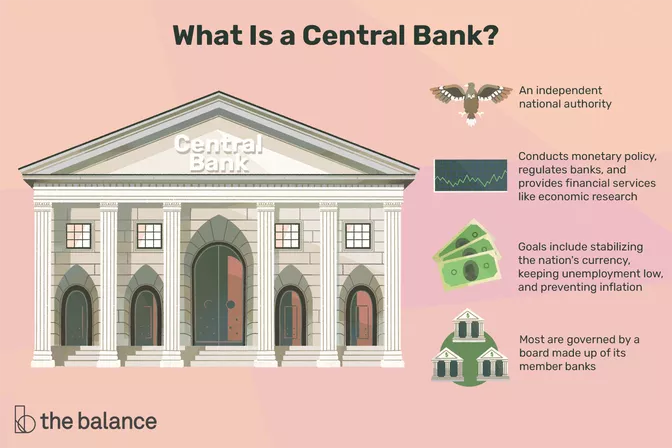Central Bank

What is Central Bank?
Essentially, a central bank serves as the cornerstone of a nation's financial stability, holding the exclusive rights to produce and allocate money and credit for either a single nation or a collection of countries. In today's economic landscape, these institutions also play a crucial role in formulating monetary policy and overseeing member banking activities.
By nature, central banks operate outside of market influences and can even be seen as opposing competition. While some are government-owned, plenty of central banks maintain a degree of autonomy from government entities, often celebrated for their independence. Even when not directly governmental, their functions and powers are enshrined in law.
One of the distinguishing features of a central bank compared to commercial banks is its legal monopoly that allows it to print and issue currency notes. On the other hand, private banks can only create demand liabilities, such as checking accounts.currency While the roles of central banks may differ around the world, their core functions generally cover three major areas.
Understanding Central Bank
Firstly, central banks have the authority to manage the national money supply by generating currency and regulating both lending and bond interest rates. To curb inflation, they may hike interest rates, while cuts in interest rates are often utilized to spur economic growth, boost industrial activity, and encourage consumer spending. This delicate balancing act is critical for steering the economy towards key objectives like reducing unemployment.
In today’s financial landscape, most central banks aim for an annual inflation benchmark between 2% and 3% when setting interest rates and directing monetary policy.inflation Secondly, central banks supervise commercial banks by setting capital and reserve requirements—which help determine how much they can lend to customers while ensuring they keep a certain amount of cash on hand. Additionally, they provide loans and services to national banks and the government, all while managing foreign exchange reserves.
Lastly, a central bank acts as a safety net for struggling commercial banks and, at times, the government itself. For instance, when a government is in need of funds, the central bank can buy government bonds, presenting a less politically contentious alternative to raising taxes.
Latin American nations stand out as remarkably eager participants in the Metaverse.
The Federal Reserve in the United States has recently published a comprehensive 49-page framework for review.
Read related articles:
« Back to Glossary IndexDisclaimer
In line with the Trust Project guidelines Cryptocurrencylistings.com Launches CandyDrop to Facilitate Crypto Acquisition while Boosting User Engagement with Valuable Projects







